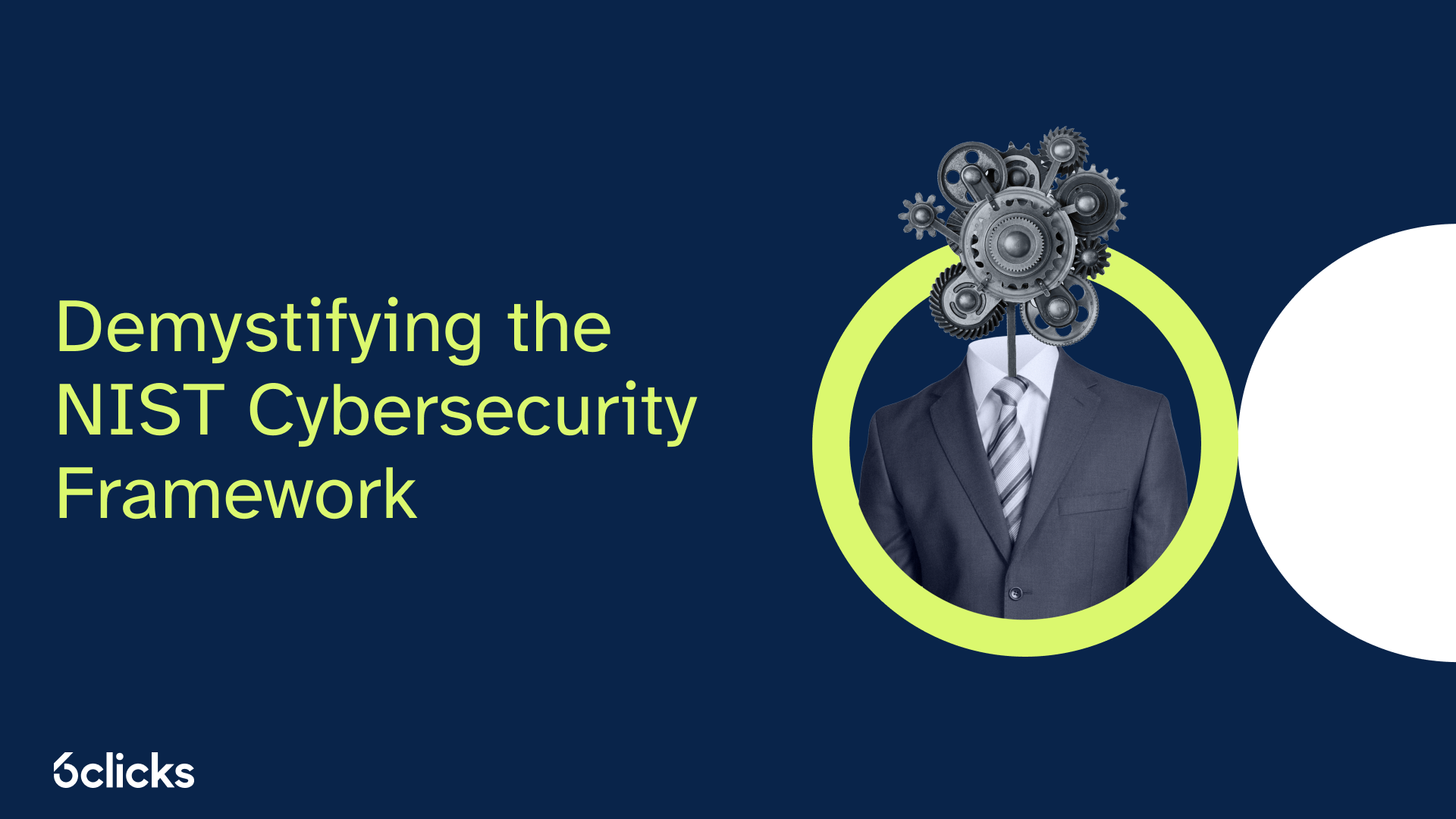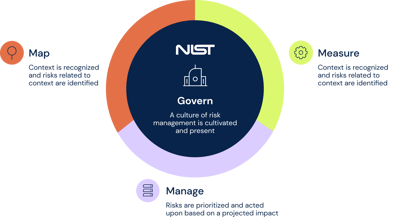Unlock the secrets of the NIST Cybersecurity Framework with this comprehensive guide that breaks down its key components and implementation strategies.
Understanding the NIST Cybersecurity Framework
The NIST Cybersecurity Framework (CSF) is a set of guidelines, best practices, and standards developed by the National Institute of Standards and Technology (NIST) to help organizations manage and improve their cybersecurity posture. It provides a flexible and adaptable framework that can be customized to suit the specific needs of an organization.
The NIST CSF helps organizations understand and manage cybersecurity risks by providing a common language and set of processes for identifying, protecting, detecting, responding to, and recovering from cyber incidents. It is based on industry standards and best practices, and is widely recognized and adopted by organizations of all sizes and sectors.
By understanding the NIST CSF, organizations can gain a clear picture of their current cybersecurity capabilities and identify areas for improvement. It helps organizations prioritize their cybersecurity efforts and allocate resources effectively to protect their critical assets and information.
Key components of the NIST CSF
The NIST CSF consists of five key components: Identify, Protect, Detect, Respond, and Recover.
- Identify: This component focuses on understanding the organization's cybersecurity risks, including the assets that need to be protected, the potential threats and vulnerabilities, and the impact of a cyber incident on the organization's mission and business operations. It involves conducting a thorough assessment of the organization's current cybersecurity posture and developing a risk management strategy.
- Protect: This component addresses the implementation of safeguards to protect the organization's critical assets and information from cyber threats. It involves developing and implementing policies, procedures, and controls to manage access to systems, secure networks, and protect against unauthorized access, data breaches, and other cyber attacks.
- Detect: This component focuses on the detection of cybersecurity events and incidents in a timely manner. It involves implementing monitoring systems and processes to identify and analyze potential threats and vulnerabilities, and to detect and respond to cyber attacks and other security incidents.
- 4. Respond: This component focuses on the organization's response to a cybersecurity incident. It involves developing and implementing an incident response plan, establishing communication channels, and coordinating the response efforts to minimize the impact of an incident and restore normal operations as quickly as possible.
- 5. Recover: This component focuses on the organization's ability to recover from a cybersecurity incident. It involves developing and implementing plans and procedures to restore systems and data, analyze the incident to learn from it, and make necessary improvements to prevent similar incidents in the future.
Implementing the NIST CSF in your organization
Implementing the NIST CSF in your organization requires a systematic approach and a commitment to continuous improvement. Here are some steps to help you get started:
- Assess your current cybersecurity posture: Conduct a thorough assessment of your organization's current cybersecurity capabilities, including policies, procedures, and technical controls. Identify any gaps or areas for improvement.
- Define your cybersecurity goals: Based on the assessment, define your organization's cybersecurity goals and objectives. Consider the specific needs and risks of your organization.
- Develop a risk management strategy: Develop a risk management strategy that aligns with the NIST CSF. This involves identifying and prioritizing risks, implementing safeguards, and monitoring and evaluating the effectiveness of your cybersecurity controls.
- Implement the NIST CSF components: Implement the five key components of the NIST CSF - Identify, Protect, Detect, Respond, and Recover - in your organization. Customize the framework to suit your organization's specific needs and requirements.
- Train and educate your workforce: Provide training and education to your employees to raise awareness about cybersecurity risks and best practices. Foster a culture of cybersecurity within your organization.
- Monitor and evaluate: Continuously monitor and evaluate the effectiveness of your cybersecurity controls. Regularly assess your organization's cybersecurity posture and make necessary improvements.
Remember, implementing the NIST CSF is an ongoing process. It requires regular review, assessment, and adaptation to keep pace with evolving cyber threats and organizational changes.
Benefits of adopting the NIST CSF
Adopting the NIST CSF can bring several benefits to your organization:
- Improved cybersecurity posture: The NIST CSF provides a comprehensive framework to assess and improve your organization's cybersecurity capabilities. By adopting the framework, you can identify and address vulnerabilities, reduce risks, and enhance your overall cybersecurity posture.
- Enhanced risk management: The NIST CSF helps organizations understand their cybersecurity risks and develop effective risk management strategies. It enables organizations to prioritize their cybersecurity efforts and allocate resources effectively to protect critical assets and information.
- Regulatory compliance: The NIST CSF is widely recognized and adopted by government agencies, industry regulators, and other organizations. By adopting the framework, you can demonstrate compliance with cybersecurity regulations and standards.
- Increased customer trust: Implementing the NIST CSF demonstrates your commitment to cybersecurity and the protection of customer data. It can enhance customer trust and confidence in your organization's ability to safeguard their information.
- Competitive advantage: Organizations that adopt the NIST CSF can differentiate themselves from competitors by demonstrating a strong cybersecurity posture. It can give you a competitive advantage in the marketplace and open new business opportunities.
- Continuous improvement: The NIST CSF promotes a culture of continuous improvement in cybersecurity. By regularly assessing and adapting your cybersecurity controls, you can stay ahead of emerging threats and ensure the ongoing protection of your organization's assets and information.
Best Practices for maintaining NIST CSF compliance
Maintaining NIST CSF compliance requires ongoing effort and diligence. Here are some best practices to help you stay compliant:
- Regularly assess your cybersecurity posture: Conduct regular assessments of your organization's cybersecurity capabilities to identify any gaps or areas for improvement. Use the NIST CSF as a benchmark for measuring your cybersecurity maturity.
- Stay updated on emerging threats: Stay informed about the latest cybersecurity threats, vulnerabilities, and best practices. Subscribe to industry publications, attend cybersecurity conferences, and participate in information sharing forums.
- Establish a cybersecurity governance structure: Establish a cybersecurity governance structure within your organization to ensure accountability and oversight. This includes assigning roles and responsibilities, developing policies and procedures, and conducting regular audits and reviews.
- Conduct regular employee training: Provide regular training and education to your employees on cybersecurity awareness and best practices. Foster a culture of cybersecurity within your organization.
- Implement a robust incident response plan: Develop and implement an incident response plan that outlines the steps to be taken in case of a cybersecurity incident. Test and update the plan regularly to ensure its effectiveness.
- Monitor and evaluate: Continuously monitor and evaluate the effectiveness of your cybersecurity controls. Regularly review and update your risk management strategy and make necessary improvements.
By following these best practices, you can maintain NIST CSF compliance and ensure the ongoing protection of your organization's critical assets and information.
Frequently asked questions
What is the NIST Cybersecurity Framework (CSF)?
The NIST CSF is a set of guidelines and best practices developed by the National Institute of Standards and Technology to help organizations manage and improve their cybersecurity posture. It offers a flexible framework that can be customized to fit the specific needs of any organization.
What are the key components of the NIST CSF?
The framework is divided into five key components:
- Identify: Understand organizational cybersecurity risks, assets, and potential impacts.
- Protect: Implement safeguards to protect critical assets and information.
- Detect: Set up systems to detect cybersecurity events in a timely manner.
- Respond: Develop and execute a response plan to cybersecurity incidents.
- Recover: Create and manage plans to recover from cybersecurity incidents and restore normal operations.
How can an organization implement the NIST CSF?
Implementing the NIST CSF involves:
- Assessing the current cybersecurity posture.
- Defining cybersecurity goals based on organizational needs.
- Developing a tailored risk management strategy.
- Implementing the five components of the framework.
- Training and educating the workforce.
- Continuously monitoring and evaluating the effectiveness of cybersecurity controls.
What are the benefits of adopting the NIST CSF?
Adopting the NIST CSF can help organizations:
- Enhance their cybersecurity posture and risk management.
- Achieve regulatory compliance.
- Increase customer trust and confidence.
- Gain a competitive advantage.
- Foster a culture of continuous improvement in cybersecurity.
How often should an organization review its cybersecurity posture using the NIST CSF?
It is recommended that organizations conduct a thorough review of their cybersecurity posture at least annually or as major changes occur within the organization or its technological environment. Regular assessments help in identifying new vulnerabilities and adjusting strategies to counter emerging threats.
Written by Andrew Robinson
Andrew started his career in the startup world and went on to perform in cyber and information security advisory roles for the Australian Federal Government and several Victorian Government entities. Andrew has a Masters in Policing, Intelligence and Counter-Terrorism (PICT) specialising in Cyber Security and holds IRAP, ISO 27001 LA, CISSP, CISM and SCF certifications.










